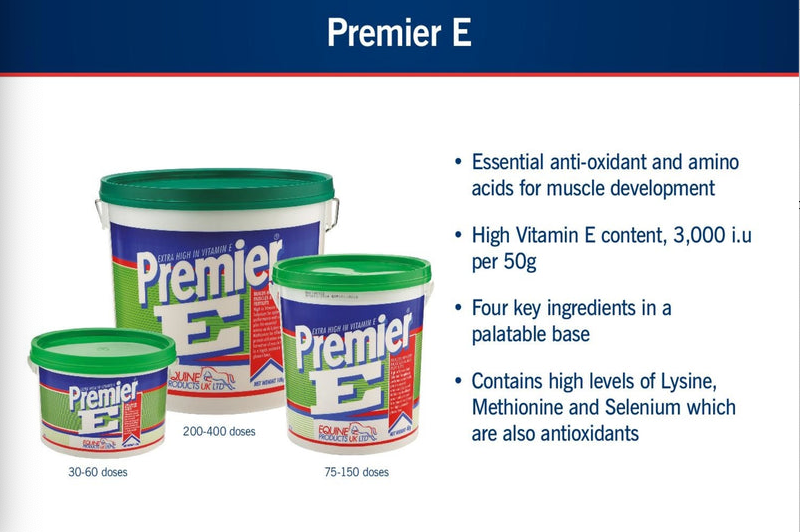Key Feeding Challenges for the Sports and Leisure Horse

Challenge: Lacking Micronutrients: Vitamin E
Vitamin E is an antioxidant essential for muscle and immune function. Requirement for this vitamin increases with exercise, clinical conditions such as tying up, and fat enriched rations. While vitamin E is usually included in concentrate feeds and supplements, fresh forage (grass) would normally be the largest source of it in the diet.
Subsequently, common scenarios where vitamin E is found to be lacking include limited or no access to fresh grass, or the feeding of rations which include a large quantity (more than 100ml) of straight oil such as vegetable or linseed oil.
It is important to note that while many concentrate feeds and supplements supply elevated levels of antioxidants, vitamin E may still need to be supplemented where these management and feeding situations exist. While the impact of deficiency in the short term is only likely to be minimal, the shortfall should be addressed where this management or feeding exists for longer periods.
Feeding Solution: Have a look at the level of vitamin E provided by the current ration: A horse at rest requires between 1-2 international units (IU) per kilogram of bodyweight per day, which equates to 600-1200IU for a 600kg horse. A horse in moderate to hard work can require between 2000-4000IU per day.
If you are adding further straight oil to the diet (more than 100ml per day) you will need to supplement 100-150 IU of vitamin E for every additional 100ml of oil added.
If your ration is coming up short, consider supplementing the ration with a vitamin E supplement such as Premier E (50g provides 3000IU of vitamin E per day) or select an alternative ‘base’ supplement or concentrate feed with good levels of vitamin E (50g of Selenavite E provides 2000IU of vitamin E per day).
